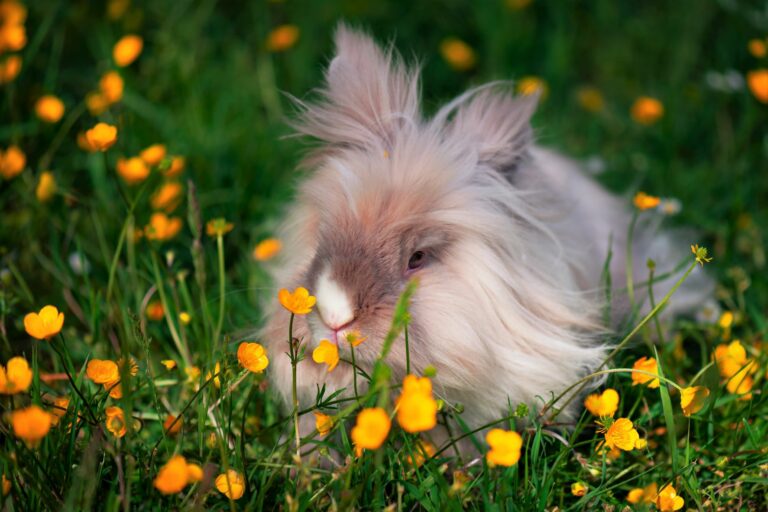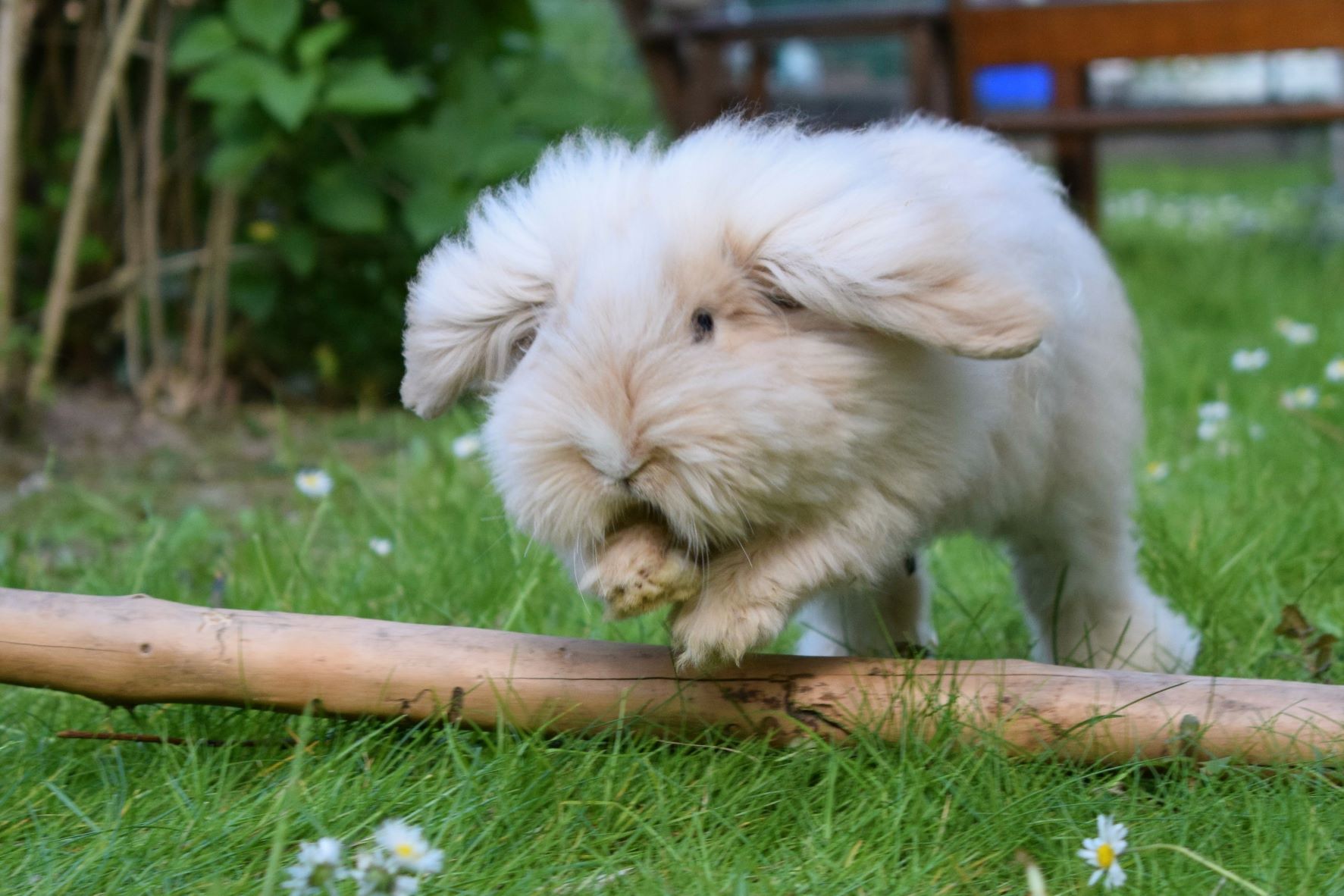Species-appropriate accommodation for teddy rabbits
Rabbits are very sociable animals and should never be kept alone. To live a happy life, they need fellow rabbits to play and cuddle with.
The following group setups have proven successful:
- a castrated male with one to three neutered females
- two castrated males with two to four neutered females
- one small group of castrated males
Female-only groups are not recommended, because aggression can often occur amongst them.
Keeping teddy rabbits with other pets
In certain circumstances, you can keep your teddy rabbit together with cats or even dogs. Don’t get your hopes up though that a close friendship will develop between them. To be on the safe side, you definitely shouldn’t leave your rabbit alone with your cat or dog.
Unfortunately rabbits and guinea pigs have little in common and don’t get along very well with one another. Misunderstandings and aggressions are inevitable. Hence, you’re better off keeping teddy rabbits and guinea pigs separate from one another.
Dwarf rabbits need space too
Even small rabbit breeds need plenty of space to hop and run. Regular exercise and a large enclosure are obligatory.
In addition, the following items are part of the basic equipment for a rabbit hutch:
The hutch and enclosure should of course be cleaned regularly so that your rabbits feel at ease and stay healthy.
In the zooplus online store, you will find a large range of rabbit hutches and outdoor enclosures. You can also get play tunnels and tubes for your rabbit to hide in.
Keeping teddy rabbits outdoors
Unlike other rabbit breeds, teddy rabbits can’t be kept outside whatever the weather. The long, fine hair doesn’t offer sufficient protection against low temperatures and damp. As well, the fur parts in some areas and the cold penetrates right through to the skin.
When keeping these rabbits outdoors, you should make sure that they are kept in an enclosure protected from the wind. It should be partly covered to protect them from the rain and sun too.
Attention: Rabbits are very fertile
A female rabbit is sexually mature at the age of three months and can give birth to offspring several times a year. There are typically three to four babies per litter.
You should definitely get your teddy rabbits castrated. Castration doesn’t just prevent unwanted offspring, but has a further advantage: Castrated males are less involved in fights over territory and hierarchy.
Do females also have to be spayed?
Although it isn’t obligatory, it’s recommended to get female rabbits spayed too. Vets have discovered that unspayed females are prone to painful uterine infections and tumours.
Did you know? Male rabbits are still fertile four to six weeks after castration.

